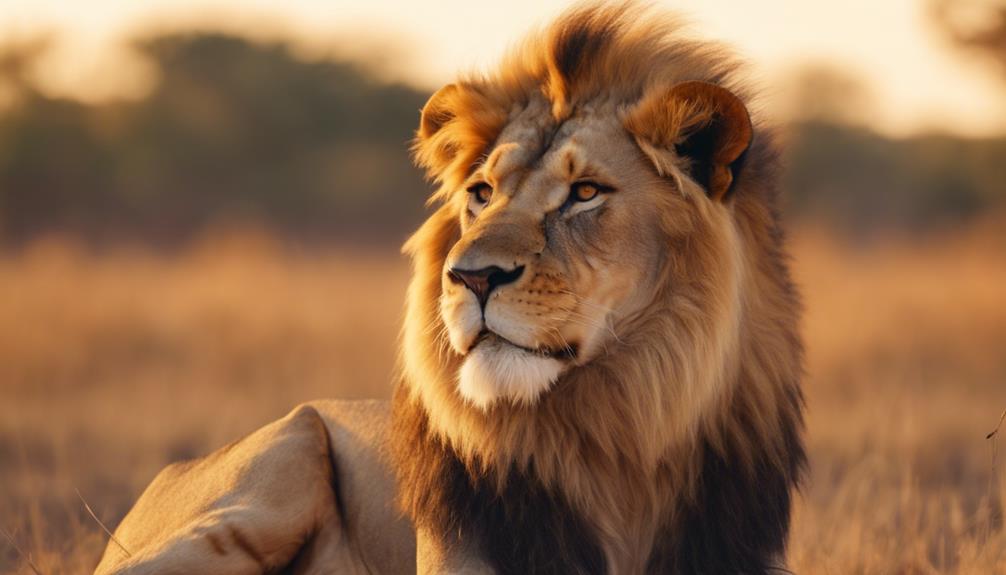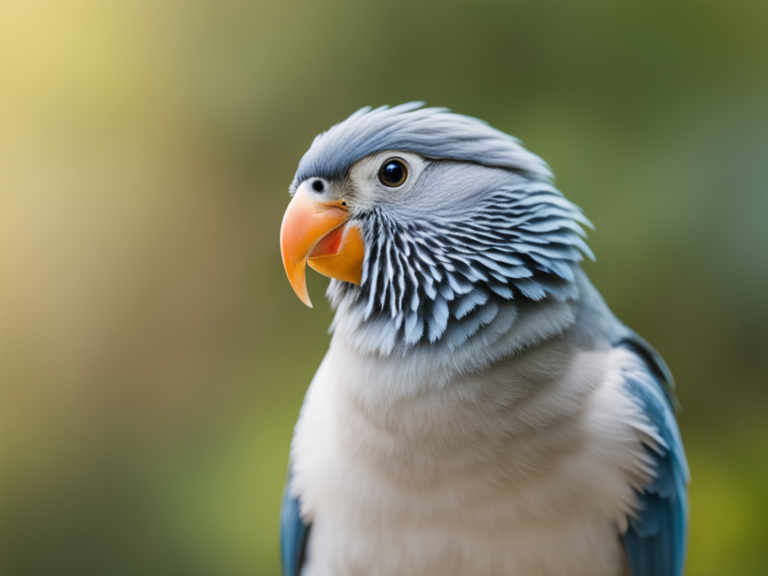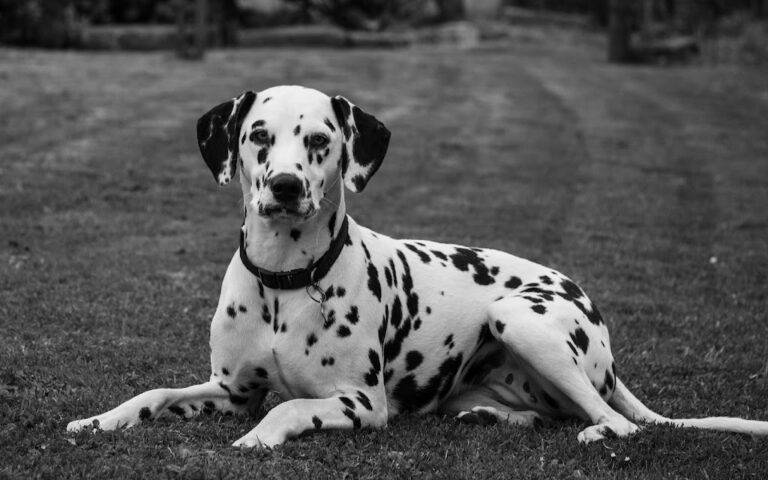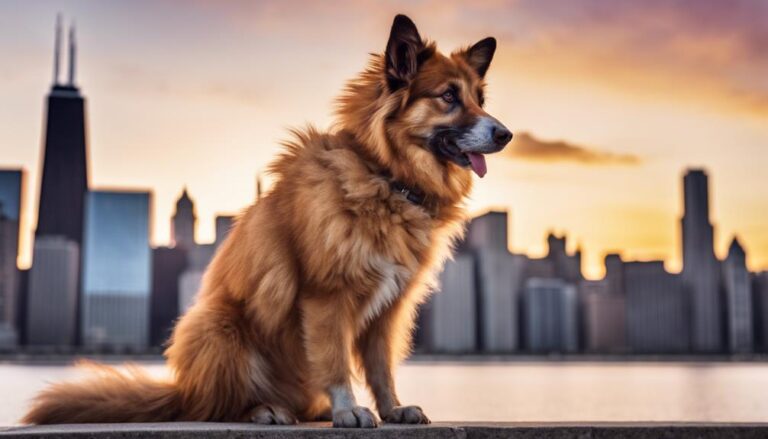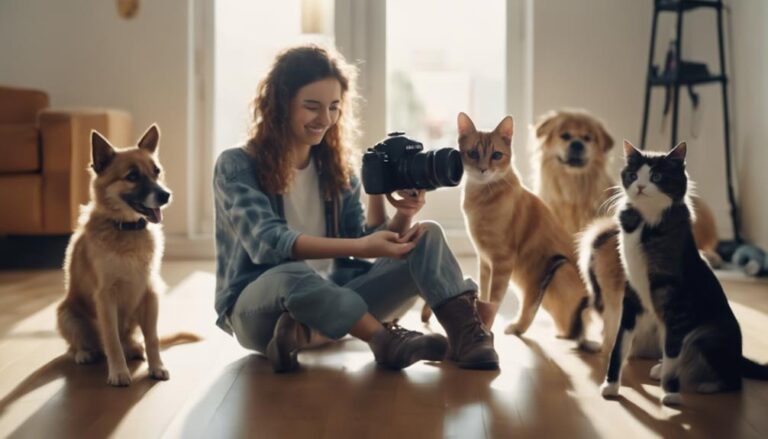Embark on thrilling safari excursions to capture breathtaking wild animal photography that will immerse you in the raw beauty and untamed essence of nature. Adjust your camera settings for fast-moving subjects, set a high shutter speed, and use a wide aperture for that desired bokeh effect. Understand animal behavior by observing movements and interpreting body language. Embrace the Golden Hour for warm light and use shadows for depth in your compositions. Focus on the eyes for emotional connection in your wildlife portraits. Enhance your images with color correction and creative filters for an artistic touch. Start your safari journey, and your photography skills will be elevated to new heights.
Essential Gear for Safari Photography
When embarking on a safari journey, ensuring you have the necessary gear for wildlife photography is essential for capturing stunning shots in the wild. Begin by adjusting your camera settings to make sure you are prepared to capture fast-moving subjects in different lighting conditions. Set your camera to a fast shutter speed to freeze the motion of animals and avoid blurry shots. Additionally, consider using a wide aperture to create a lovely bokeh effect that isolates your subject from the background.
Lens selection is another important aspect of wildlife photography on safari trips. Opt for a telephoto lens with a focal length of at least 200mm to photograph animals from a distance without disturbing them. This will also enable you to take close-up shots of animals while keeping a safe distance. A zoom lens with a versatile focal range, like a 70-200mm, can be a great choice for capturing a variety of shots without having to switch lenses frequently.
Don't forget to pack extra batteries and memory cards to avoid missing out on capturing memorable moments. Having a durable camera bag to shield your gear from dust and moisture is also crucial. By preparing your equipment with the right camera settings and lens selection, you'll be well-equipped to capture stunning wildlife photos on your safari expedition.
Understanding Animal Behavior for Shots
To capture mesmerizing wildlife shots on safari, observe animal behavior closely to anticipate their movements and reactions. Understanding animal behavior is vital for photography as it allows you to predict moments of interest and capture them effectively. Animals communicate through various signals such as body language, vocalizations, and even scents. By learning to interpret these cues, you can gain insights into their intentions and emotions, helping you frame your shots more meaningfully.
When photographing animals in their natural habitats, it's imperative to blend in with the environment and avoid disrupting their usual routines. Patience is key as you wait for the perfect moment to capture a compelling shot. Observing how animals interact with each other and their surroundings can provide unique opportunities for stunning photographs that tell a story.
Pay attention to the light and how it interacts with the animals in their habitat. The quality of light can greatly impact the mood and aesthetic of your photographs. Experiment with different angles and compositions to create visually interesting shots that highlight the beauty of wildlife in their natural environment.
Mastering Lighting and Composition Techniques
Enhance your wildlife photography skills by mastering lighting and composition techniques to elevate the quality of your shots. When capturing wild animals in their natural habitats, paying attention to natural elements and experimenting with creative angles can truly make your photos stand out. Here are some tips to help you improve your photography game:
- Embrace the Golden Hour: Make the most of the soft, warm light during sunrise and sunset to add a magical touch to your wildlife photos.
- Use Shadows to Your Advantage: Shadows can create depth and drama in your shots, so don't be afraid to play around with them for artistic effects.
- Incorporate Leading Lines: Utilize natural lines like tree branches or riverbanks to lead the viewer's eye towards your subject, creating a dynamic composition.
- Experiment with Silhouettes: Silhouettes can be powerful and mysterious, especially against a colorful sky during dusk or dawn.
- Look for Reflections: Water bodies can provide stunning reflections of animals, adding symmetry and interest to your photographs.
Best Practices for Wildlife Portraits
Embrace the essence of wild animal personalities through expertly crafted wildlife portraits that capture the raw beauty of nature. When capturing expressions in wildlife portraits, focus on the eyes of the animals. The eyes are the windows to their souls, revealing emotions and adding depth to your photographs. Try to get on eye level with the animal to establish a connection and convey a sense of intimacy in the portrait.
To create unique perspectives in your wildlife portraits, experiment with different angles and compositions. Instead of always centering the animal in the frame, consider off-center compositions or close-up shots of specific features like paws, feathers, or textures. These close-up shots can reveal intricate details that are often overlooked but contribute to the overall story of the animal.
Play with depth of field to draw attention to the subject while creating a soft, blurred background that enhances the visual impact of the portrait. Use natural elements like trees, rocks, or water bodies to frame the animal and add context to the photograph. Remember, the goal of wildlife portraits is not just to document the animals but to tell their stories through your lens. By capturing expressions and exploring unique perspectives, you can create mesmerizing wildlife portraits that resonate with viewers and celebrate the beauty of these magnificent creatures.
Editing Tips for Stunning Safari Images
For enhancing the visual appeal of your safari images, consider utilizing editing techniques to elevate the overall quality and impact of your photographs. When it comes to editing your safari images, there are a few key techniques you can use to make your photos truly stunning. Here are some tips to help you enhance your safari images through editing:
- Color correction: Adjusting the colors in your images can make a significant difference in how vibrant and captivating your safari photos appear. Experiment with color tones to evoke different moods and enhance the natural beauty of the wildlife you captured.
- Image retouching: Fine-tune your images by retouching any imperfections or distractions that may take away from the main subject. Whether it's removing blemishes or distractions in the background, image retouching can help you achieve a more polished and professional look.
- Contrast enhancement: Increasing the contrast in your safari images can make the details pop and create a more dynamic visual impact. Play around with contrast levels to add depth and dimension to your photographs.
- Cropping and framing: Adjusting the composition of your images through cropping and framing can help draw the viewer's eye to the main subject. Experiment with different cropping techniques to find the most visually appealing composition for your safari photos.
- Adding creative filters: Explore creative filters and effects to give your safari images a unique and artistic touch. From black and white conversions to vintage filters, adding creative effects can help you convey a specific mood or aesthetic in your photographs.
Frequently Asked Questions
What Are Some Common Safety Precautions to Take While Photographing Wild Animals on Safari Trips?
When photographing wild animals, prioritize safety guidelines by understanding wildlife behavior. Respect boundaries, avoid sudden movements, and never feed or approach animals. Utilize appropriate camera equipment to capture moments without impacting the environment or disturbing the animals.
How Can Photographers Ensure the Ethical Treatment of Animals While Capturing Their Images on Safari?
To guarantee responsible photography and ethical treatment of animals, observe wildlife behavior without disturbing or altering their natural habitat. Respect their space, avoid approaching too closely, and prioritize their well-being over capturing the perfect shot.
Are There Any Specific Regulations or Guidelines That Photographers Need to Follow When Photographing Wildlife on Safari?
To guarantee regulatory compliance and uphold wildlife behavior ethics, remember that guidelines exist for photographing animals on safari. Respect their natural habitat, maintain a safe distance, and avoid disruptive actions for ethical wildlife photography.
How Can Photographers Best Engage With Local Communities and Support Conservation Efforts Through Their Safari Photography?
To best engage with local communities and support conservation efforts through your safari photography, immerse yourself in local culture, collaborate with community members, promote sustainable practices, and donate a portion of your proceeds to conservation initiatives.
What Are Some Unique Challenges That Photographers May Face When Trying to Capture Images of Elusive or Nocturnal Animals on Safari Trips?
Capturing images of elusive or nocturnal animals on safari trips can be challenging due to difficult lighting conditions and camouflaged subjects. You'll need patience, specialized equipment, and a keen eye for spotting these creatures.
Conclusion
Now that you have all the essential gear and techniques for capturing stunning wildlife photos on safari, it's time to put them into practice. Remember to be patient and observant, and always prioritize the safety and well-being of the animals. With practice and dedication, you'll be able to create breathtaking images that showcase the beauty and majesty of wild animals in their natural habitat. Enjoy your safari photography adventures and happy shooting!

